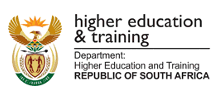
Volker Wedekind, REAL Centre, University of Witwatersrand (Policy Roundtable 17 February 2016)
The issue of employability lies at the heart of debates around skills and human resources development. It is a recurring policy concern that significant numbers of graduates at all levels of the system are not able to find employment, despite successfully completing their training. Volker Wedekind and Sybert Mutereko reflected on seven case studies conducted across different types of post-school education and training (PSET) institutions, in the agribusiness (sugar and forestry) and automotive production and maintenance sectors.
The research investigated five broad drivers that shape the kinds of curriculum responses that can enable or hinder employability:
- In terms of employers, the key finding was that there is no single view on what makes people employable, and what employers’ training responsibility should be. Most critically, in assessing qualifications, employers placed great value on reputation and trust, signalling a need to raise awareness and build understanding about new qualifications. Concerns were raised about poor levels of general education, and this was often directly related to the ‘soft’ skills typically associated with employability. The case studies revealed a number of very positive partnerships between employers and education providers, and there was a general willingness to engage. There was also a question about how closely programmes should be aligned to a specific industry, as this may in fact limit employability and ultimately make a programme unattractive.
- The extent to which student needs were taken into account varied across the cases. Structured programmes of support, or simply caring lecturers made a difference. For most students the greatest obstacles were material issues, such as accommodation, transport and food. Addressing these obstacles requires a multi-pronged approach.
- Policy (or lack thereof) framed the curriculum and in some instances constrained what could be achieved. For example, the requirements of the NQF made it difficult to combine different levels of knowledge and purpose in one work-orientated programme. Requirements for work-integrated learning (in the form of work placement) created blockages in the system which were beyond the control of education providers. Policy and regulations could also facilitate coordination within a sector or industry, which made it easier to respond to skills needs at the meso-level.
- There are also social and environmental pressures and concerns that demand a response, based on an ethical and social justice imperative. These responses may at times act in tension with employer perspectives, but do offer a vehicle through which wider generic skills can be taught.
- Curriculum is always mediated by the capacities and resources available in the organisation, and has to align with organisational procedures. Curriculum decisions are shaped by staffing needs, organisational systems and priorities, and strategic decisions such as cross-programme outcomes.
Overall, the research findings suggest that curriculum responsiveness is a complex interplay of multiple factors, rather than a simple correspondence between employer needs and provider curricula. It is not helpful to view curriculum narrowly in terms of a single qualification. Rather, we should understand it as a course of learning with a specific end goal, for example, competent practice in an occupational field.
The set of presentations can be accessed on the LMIP website here.





